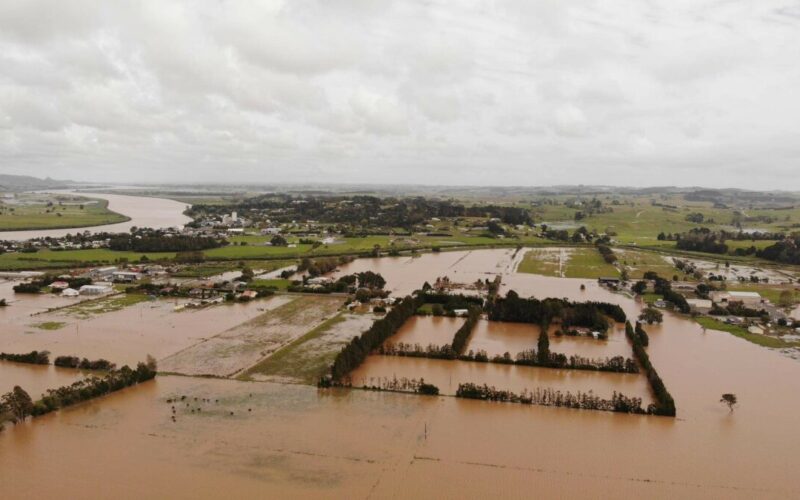By Neal Wallace and Richard Rennie
On one level Hawke’s Bay and Tairāwhiti are back to normal one year after being devastated by Cyclone Gabrielle. The grass is growing, fruit and crops are ripening and a sense of normality was reinforced by the recent Hawke’s Bay Fruitgrowers Association awards night earlier this month and the return of the Napier Port Primary Sector Awards in Hawke’s Bay.
On another level it is obvious the region is still recovering.
There are still 1.2 million cubic metres silt to be removed in Hawke’s Bay, 100 Wairoa homes are still uninhabitable and thousands of kilometres of fencing and tracks need to be repaired or replaced.
Farming and community leaders say the region has been changed forever.
Tairāwhiti farmer and Federated Farmers board member Toby Williams predicts fewer sheep and more cattle will be farmed on the east coast for ease of management.
Forestry companies may be less active in the property market due to the economics and rules dealing with trash, but Williams said landowners may have to lower their pricing expectations.
Apple growers have learnt from the 2010 PSA outbreak in kiwifruit, when growers replanted with the virus-resistant Gold variety. Apple growers are replanting with new Rockit, Envy and Dazzle varieties.
Hawke’s Bay Fruit Growers chair Brydon Nisbet said about 610ha of apples – about 10% of the region’s crop – was lost to the cyclone, but growers were pleasantly surprised at how trees survived the storm.
“We’ve got a good crop. What we need now are good returns to growers,” he said.
Hastings District Council mayor Sandra Hazlehurst said they are still restoring roading access, with 10 temporary bridges built and hundreds of kilometres of roads and numerous culverts repaired.
There is still plenty to do.
Hawke’s Bay regional councillor and Waipukurau farmer Will Foley described progress in the past year as remarkable.
“In the first couple of days post cyclone, we were wondering how we were ever going to recover.
“While there is a still a massive amount of work still to be done, everyone is surprised by what has been achieved so far.”
Foley said the cyclone was a reminder to rural communities to be better prepared for when extreme weather events destroy roads, bridges, electricity and telecommunications.
“It’s brought rural communities a lot closer together and they will be a lot better prepared with what they need to have, need to know and need to do.”
Foley said persistent wet weather since the cyclone meant farmers have been busy over summer with delayed repairs.
There was audible relief that the forecast El Niño weather pattern has not caused a drought.
“Farmers are mentally stressed by the cyclone and general farming sentiment, so thank God summer has been a bit more favourable.”
Federated Farmers Hawke’s Bay president Jim Galloway said farmers are looking at land use options such as planting trees, restoring wetlands or looking at stock types.
Rural people are also looking at their emergency preparedness, such as having more fuel and access to generators.
Williams said parts of Tairāwhiti are still too wet for heavy machinery to access, with water bubbling out of the ground and new slips appearing over Christmas after a rain event.
“For us it is not a one-year sprint. For some it will be five to 10 years to get back where we were prior to the storm.”
The storm has also prompted discussion about practical ways to protect waterways and the use of trees to stabilise erodible land.
Wairoa mayor Craig Little is struggling to stay positive given the slow progress rebuilding his community.
A year after the cyclone, Little said, 100 homes in the town are still uninhabitable and farmers are still trying to repair fences and tracks.
“We have a long way to go. It will be 10 or 15 years but if we keep going at this rate, it could be 20 years.”
Gisborne mayor Rehette Stoltz is calling for a rethink about how road networks are funded in the wake of disasters.
She wants less red tape and ways to hasten the use of local contractors to immediately respond to a crisis.
Farmers in the region remain stuck with poor access and an inability to get stock in or out via truck.
In the hinterland lies the ticking time bomb of legacy slash still not washed down through river systems, with decisions on how to fund its removal still pending.
But there is also an acceptance that forestry continues to play a vital role in the region’s economy, and a shift in planting patterns rather than wholesale banning may see greater interspersion of farm-based native plantings alongside more considered exotic re-plantings in coming years.
In Focus podcast | 9 February
Valentine’s Day marks one year since Cyclone Gabrielle ripped through the eastern North island.Farmers, growers and communities faced a massive recovery as they worked to rebuild infrastructure, supply chains and get the land back into productive shape.
For this week’s show, I sat down with Rod Vowles, who farms just east of Waipawa a few kilometres from the Tukituki River. His story of survival is astonishing.
Then, Karen Morrish from Apples and Pears NZ to see how Hawke’s Bay growers are faring as the harvest gets under way.
And, Federated Farmers national board member Sandra Faulkner shares how Tairāwhiti farmers are getting on up the coast.






